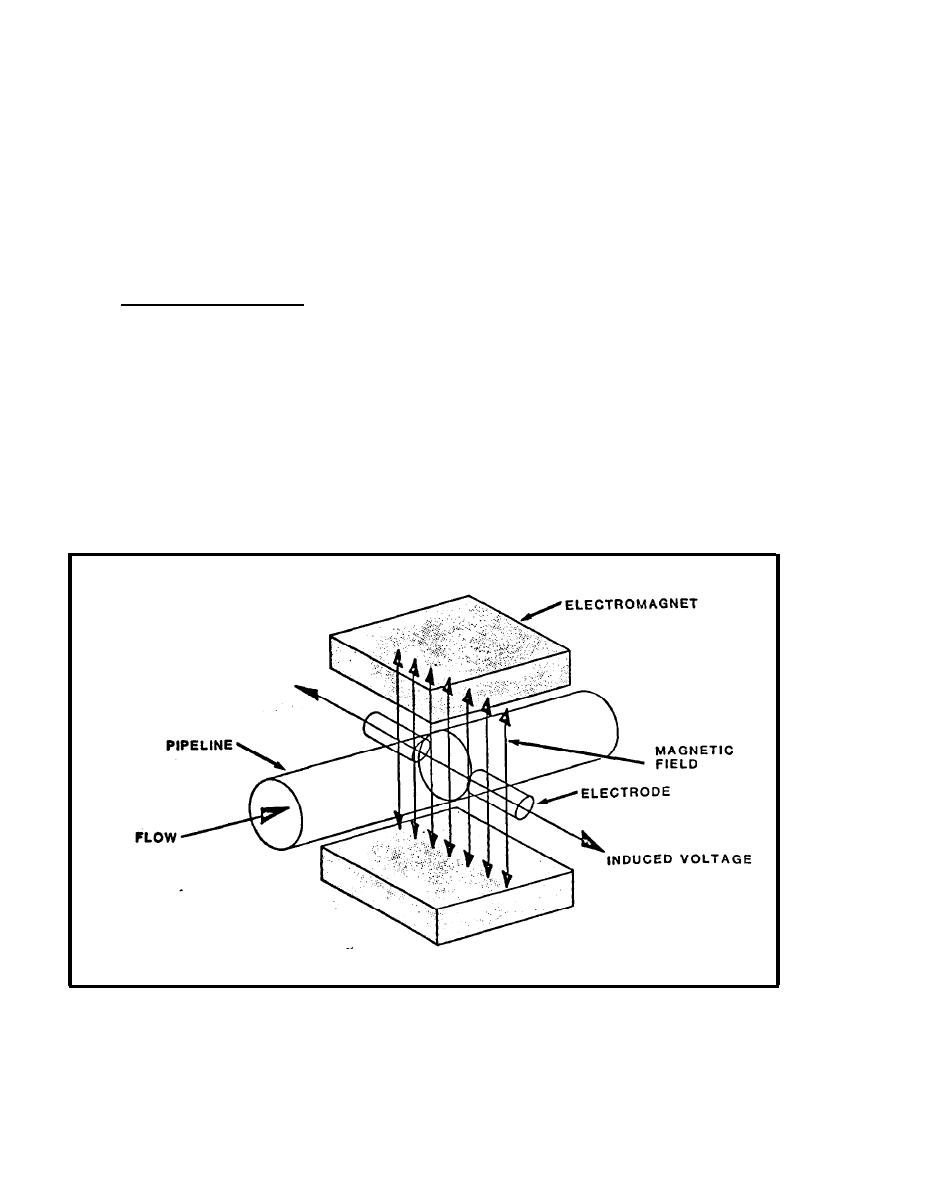

Custom Search
|
|

|
||
 Section 3. ELECTROMAGNETIC FLOWMETERS
1. INTRODUCTION. Electromagnetic flowmeters (magmeters) can handle most
liquids and slurries, including corrosives, providing that the material being
metered is electrically conductive. Most industrial and municipal water and
waste liquids can be measured by these meters. Liquids with suspended solids
and certain waste flows which are often impossible to meter otherwise, are
dependably measured with electromagnetic flowmeters.
1.1 Operating Principles. Electromagnetic flowmeters operate on Faraday's
law of electromagnetic induction, which states that the voltage induced across
a conductor, that moves at right angles through a magnetic field, is
proportional to the velocity of that conductor. The liquid serves as the
conductor; the magnetic field is created by energized coils outside the flow
tube (Figure 6-8). The amount of voltage produced is directly proportional to
the flow rate. Two electrodes mounted in the pipe wall detect the voltage,
which is measured by the secondary element. Forward and reverse flow
measurements are possible with no pressure drop.
2. METER DESIGNS. Electromagnetic flowmeters are available in full-bore and
Insertion type configurations. Neither type has moving parts.
FIGURE 6-8.
Electromagnetic Meter
6-14
|
 
|
|
 |
||